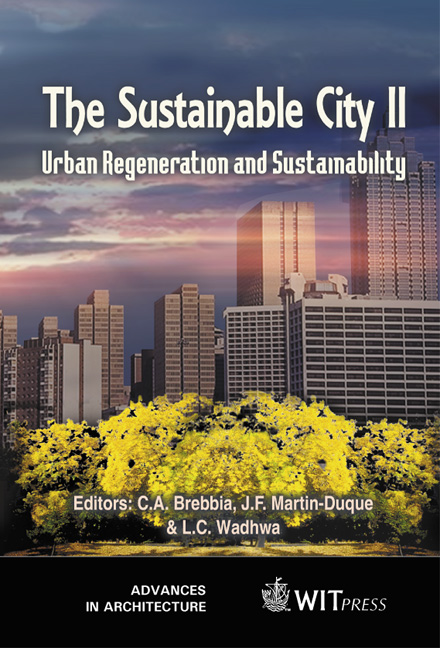The Green Zones, Main Factor Of Urban Regeneration And Of City Sustainability
Price
Free (open access)
Transaction
Volume
54
Pages
Published
2002
Size
465 kb
Paper DOI
10.2495/URS020301
Copyright
WIT Press
Author(s)
F Gomez, M L Gil, L Montero & F Rodrigo
Abstract
This work involves a study of the main interaction between green spaces and environmental parameters configuring the urban environment. Comfort indices were used in different places in the eight districts most representative of the urban complex. The formulation of these indices was statistically correlated with the surface area of green zones in order to find out the surface area of the same that should exist in a city in order for this to be able to be considered comfortable, at least theoretically. 1. Introduction The urban ecosystem demands the replacement of a normally uncomfortable natural habitat for one more suited to the technical, cultural and economic requirements of modem man; the artificial sphere has surpassed the biological capacity of the inhabitant, who once more claims and need a greater balance with elements, such as air, water, space and nature, which are in the city the environmental resources contributing to make townspeople’s lives more or less Comfortable, depending on how these are used. Green zones play roles of great interest for townspeople, such as those involving their ornamental, recreational and perceptual-landscape aspects; but there are others associated with citizens’ welfare (Werner y Sukopp, 1982) [l] which improve the climatic conditions, by acting as cooling elements or regulators of the air/temperature exchange. They also play an important role in controlling or reducing noise contamination and the alteration of the urban atmosphere’s composition.
Keywords





